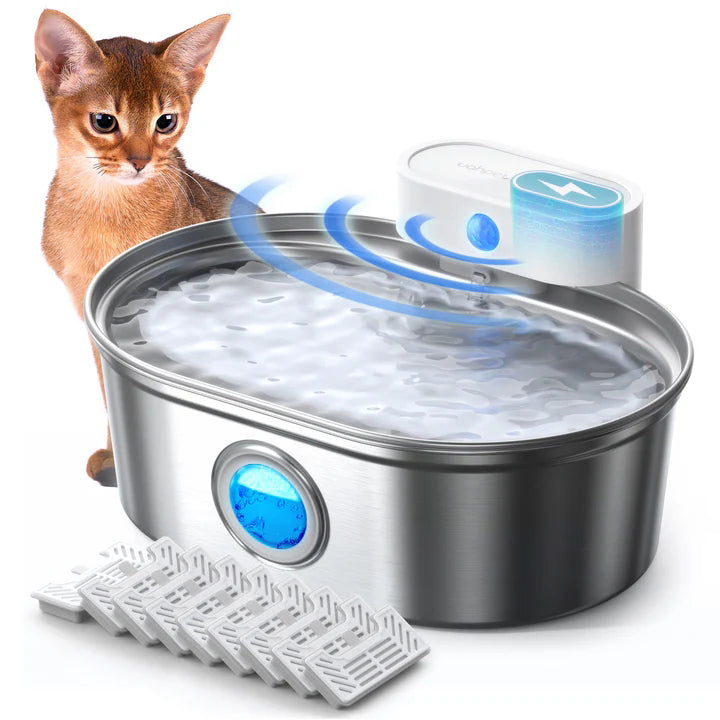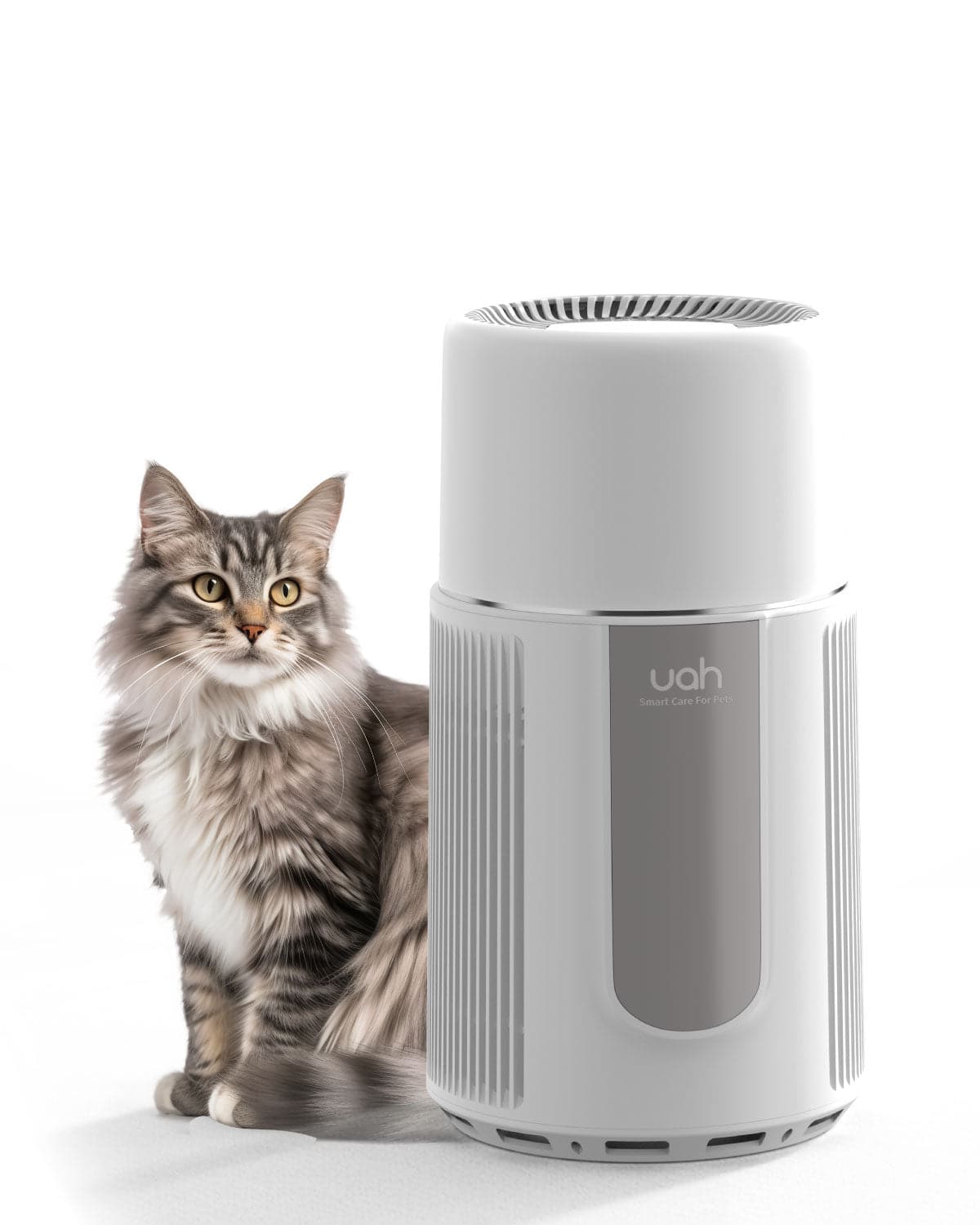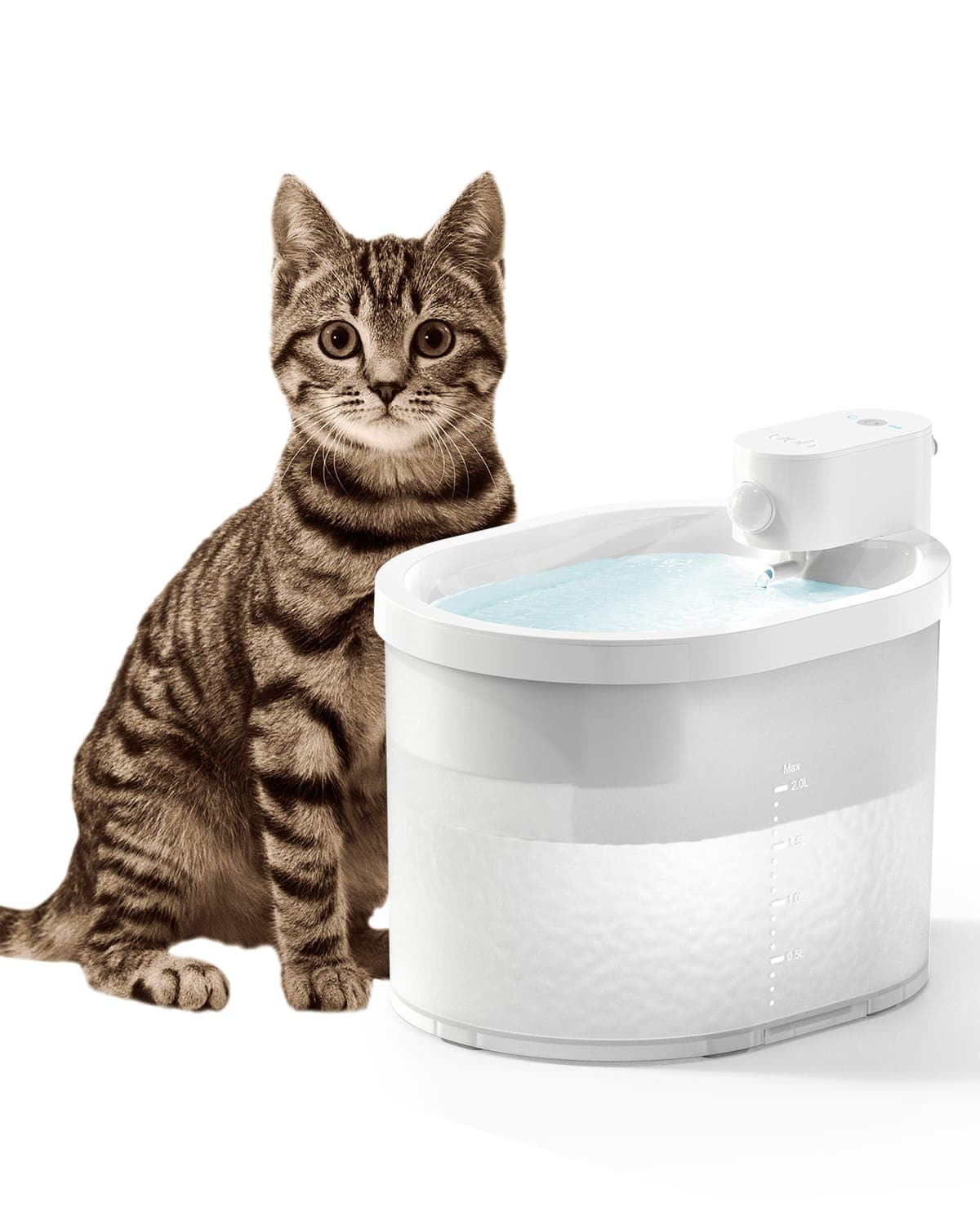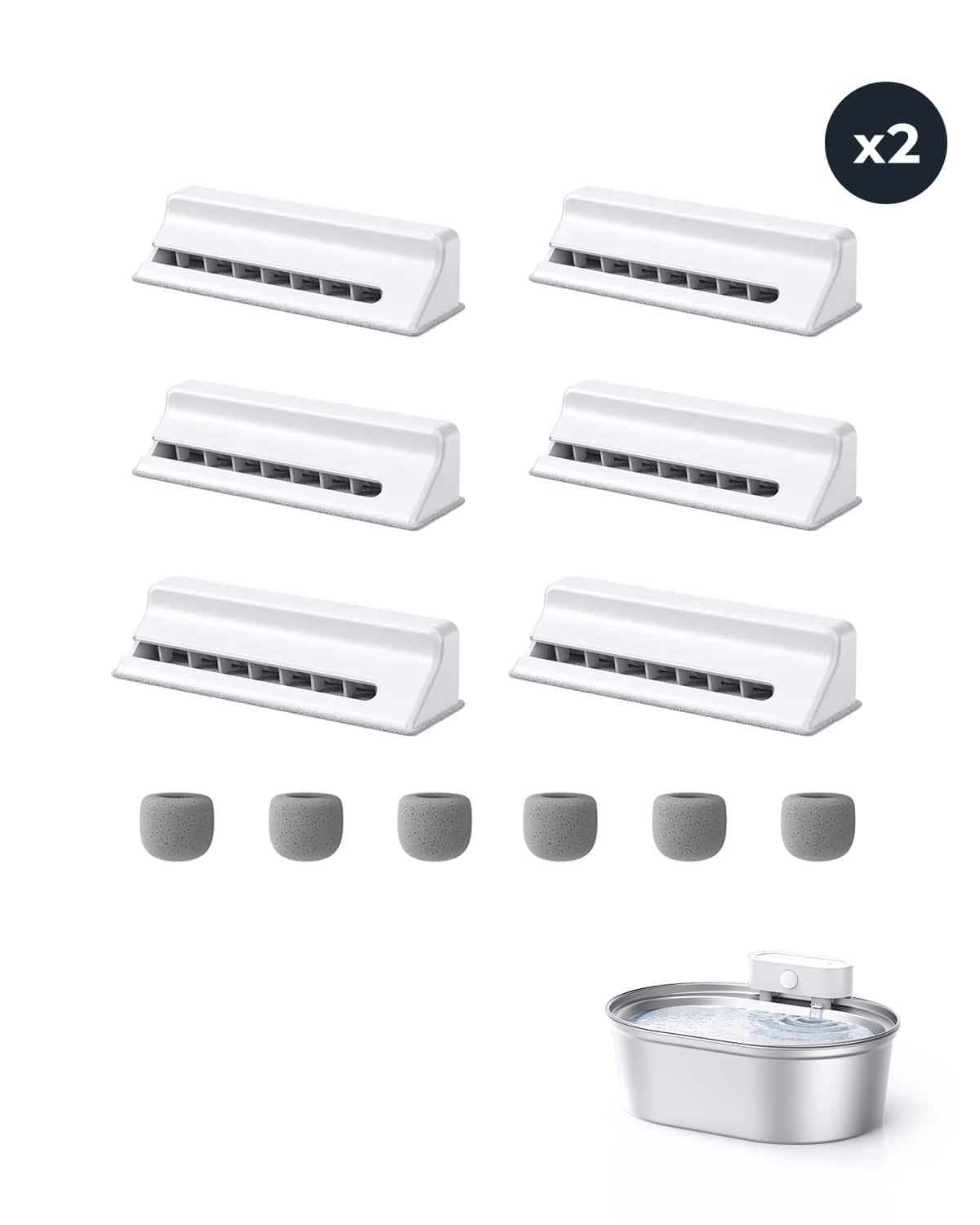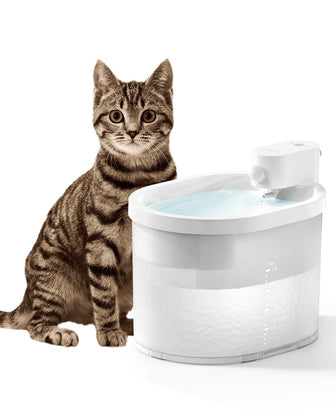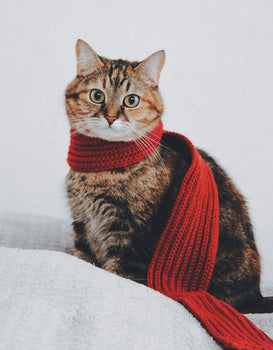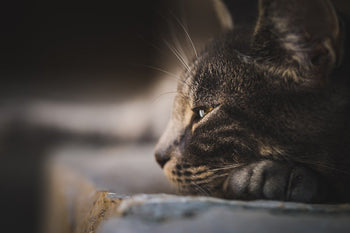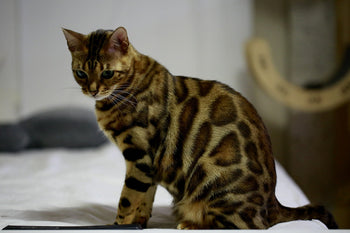Cats are fascinating creatures that have captured the hearts of millions of people around the world. They are known for their unique personalities, playful nature, and mysterious behavior.
One of the most intriguing aspects of cats is their vision. While humans see a wide range of colors, what colors do cats see?
Cats' eyes are specially adapted to help them hunt prey and navigate their environment. They have a higher number of rod cells than humans, which means they are better at seeing in low light conditions.
However, their cone cells, which are responsible for color vision, are not as plentiful as in humans. This means that cats have a more limited color vision than humans, but it is still a fascinating topic to explore.
Understanding what colors cats see can help us better understand their behavior and preferences.
For example, knowing that cats have a preference for blue and green toys can help us choose the best toys for our feline friends.
Additionally, understanding how cats see color can help us create environments that are more visually stimulating and engaging for them.
What Colors Do Cats See: Exploring Feline Color Vision

Key Takeaways
Cats have a more limited color vision than humans due to having fewer cone cells.
Cats have a preference for blue and green toys.
Understanding how cats see color can help create more visually stimulating environments for them.
Types of Colors Cats See
Dichromatic Vision in Cats
Cats have dichromatic vision, which means they can only see two primary colors - blue and green. This is because they have only two types of color receptors in their eyes, compared to humans who have three.
Therefore, they are not able to distinguish between red and green, or any other colors that are a combination of these two.
Difficulty Distinguishing Red and Green
Since cats cannot distinguish between red and green, they may see these colors as shades of gray. This is because the color receptors in their eyes are not sensitive to the wavelengths of light that correspond to these colors.
So, if you're thinking of buying a red or green toy for your cat, you may want to reconsider as they may not be able to appreciate the color as much as you do.
Enhanced Low Light Vision
Despite their limited color vision, cats are able to see better than humans in low light conditions. This is because they have a higher number of rod cells in their eyes, which are specialized for detecting light in low levels of illumination.
This allows them to see in the dark and hunt prey more effectively. In fact, cats can see in light that is six times dimmer than what humans need to see.

Comparison to Human Vision
Humans as Trichromatic
Humans have trichromatic vision, which means they have three types of color receptors in their eyes: red, green, and blue. This allows humans to see a wide range of colors, including those in the visible spectrum.
Cats, on the other hand, have only two types of color receptors, which limits their color perception.
Adaptation for Hunting
Cats have evolved to have limited color vision because it is not necessary for their survival. Their vision is adapted for hunting in low light conditions, where their ability to see movement is more important than color perception.
In fact, cats have a higher number of rods in their eyes, which are specialized cells that detect light and movement, than cones, which are responsible for color vision.
Limited Color Vision in Cats
Cats are dichromatic, which means they can only see two primary colors: blue and green. They cannot see the color red, which appears as a shade of gray to them. This limited color perception does not affect their ability to survive or hunt, as they rely more on their other senses, such as hearing and smell, to locate prey.
Impact on Cat Behavior
Sensory Reliance Over Color Vision
Cats have a highly developed sense of hearing and smell, which they rely on more than their vision. They can detect a wide range of sounds and scents that are beyond human perception.
Therefore, their behavior is not significantly affected by the limited spectrum of colors they can see.
Attraction to Brightness and Contrast
Although cats cannot see the full range of colors, they are attracted to bright and contrasting colors. They are more likely to notice toys and objects that stand out from their environment.
Therefore, it is recommended to provide toys that have bright colors or high contrast patterns to keep cats engaged and entertained.
Enriching Environments Based on Vision
While cats do not rely on color vision, enriching their environment with visually stimulating objects can improve their quality of life.
Providing vertical spaces, such as cat trees and shelves, can give cats a sense of security and a place to perch and observe their surroundings.
Additionally, placing plants with different textures and shapes can create a visually interesting environment for cats to explore.
What are the preferred colors of cats?
Cats have a tendency to gravitate towards colors that mimic their surroundings. With a broad color vision that encompasses blues and greens, cats are also attracted to vibrant hues such as yellow and orange, reminiscent of their prey. Depending on their individual upbringing and personality traits, cats may exhibit varying preferences for certain colors.
Cats find solace in soothing hues.
Specific hues can have a calming effect on felines, aiding in reducing stress and promoting relaxation. Introducing these calming colors into your cat's living space can contribute to establishing a serene atmosphere for your beloved pet, especially if they struggle with anxiety or hyperactivity.

Choosing the appropriate color of toy for your feline companion
Consider your cat's color preferences when selecting toys for them. Cats are often drawn to toys in shades of blue and green as these colors are most visible to them. Additionally, they may have a fondness for toys that feature contrasting colors or patterns, as these can stimulate their natural hunting instincts.
Interior colors suitable for homes with cats
To enhance your cat's comfort at home, it is advisable to incorporate colors that resemble their natural habitat. By using calming shades of blues and greens to color their surroundings, you can promote relaxation for your feline companion. However, it is important to avoid vibrant hues if you wish to prevent overstimulation for your cat.
Are There Colors That Cats Dislike?
Cats do not have a specific color that they hate. Nevertheless, it is crucial to refrain from using vibrant or intense colors in their surroundings, as these can overstimulate them and lead to stress. It is important to closely observe your cat's behavior in order to make any required modifications.
Conclusion
Cats have a unique visual system that allows them to see in low light and detect motion effectively. They possess a limited color vision that is similar to that of a human with red-green color blindness.
Although cats cannot see the full range of colors that humans can, they can still distinguish between some colors, especially those in the blue and green range. They also have excellent visual acuity and can see fine details clearly.
It is important to keep in mind that cats rely more on their other senses, such as smell and hearing, to navigate their environment.
However, understanding their visual capabilities can help us design environments that are more suitable for their needs.
Frequently Asked Questions
How do cats perceive colors compared to humans?
Cats have a different perception of colors compared to humans. While humans have three types of cones in their eyes that allow them to see a wide range of colors, cats only have two types of cones.
This means that cats have a limited ability to distinguish colors and see the world in shades of blue and green.
Are cats able to see the color blue?
Yes, cats are able to see the color blue. However, they see it differently than humans do. To cats, blue appears more like a light blue or grayish color.
Is a cat's vision limited to certain colors?
Yes, a cat's vision is limited to certain colors. They are not able to see the full spectrum of colors that humans can see. In addition to their limited color perception, cats also have poor visual acuity and depth perception compared to humans.
What range of colors can a cat distinguish?
Cats can distinguish colors in the blue and green spectrum, but they have difficulty distinguishing between reds and oranges. They also have trouble seeing colors in low light conditions.
Do cats have a preference for particular colors?
There is no evidence to suggest that cats have a preference for particular colors. However, they are attracted to movement and may be more interested in toys or objects that move quickly or unpredictably.
How does a cat's color vision affect their hunting behavior?
A cat's color vision plays an important role in their hunting behavior. They are able to see movement and contrast, which helps them to detect prey.
However, their limited color perception means that they may have difficulty distinguishing between prey and background colors that are similar.


